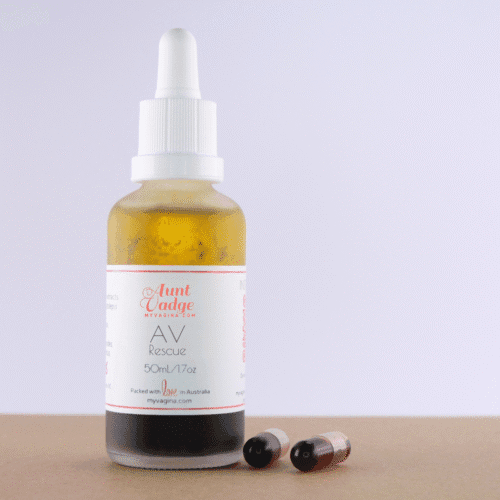Enterococcus faecalis is a facultative anaerobe that can metabolise various substrates depending on its environment, including sugars, proteins, and amino acids.
In the vagina, the metabolic byproducts of E. faecalis can contribute to microbial imbalances, inflammation, and symptoms associated with dysbiosis or infections such as aerobic vaginitis (AV) and urinary tract infections (UTIs).
E. faecalis byproducts of sugar fermentation
Enterococcus faecalis can utilise (via fermentation) glucose and other simple sugars present in the vaginal environment, often derived from glycogen breakdown. Glycogen is more abundant the more estrogen is present.
The acids produced can provide some acidity, but when Enterococcus faecalis dominates, the overall vaginal pH often becomes less stable, particularly if lactobacilli are depleted.
Lactic acid
Lactic acid is a primary byproduct of glucose fermentation and contributes to an acidic vaginal environment. However, the amount of lactic acid produced by Enterococcus faecalis is often insufficient to maintain optimal vaginal pH compared to lactobacilli.
In saying this, at My Vagina’s specialist clinic, we often find that the vaginal pH in AV is acidic and within what is otherwise understood to be healthy ranges (3.8-4.5).
Acetic acid and formic acid
Acetic and formic acids are weak acids that can slightly acidify the environment but are less effective than lactic acid in promoting a protective low pH.
Ethanol and carbon dioxide (CO₂)
Ethanol and carbon dioxide are minor byproducts that are understood to have little direct impact on the vaginal environment.
E. faecalis byproducts of protein and amino acid metabolism
When sugars are less available, Enterococcus faecalis shifts to metabolising amino acids and proteins. This process often occurs in dysbiotic conditions when lactobacilli are depleted and more proteins (from host tissues or bacterial enzymes) are present.
The production of alkaline byproducts like ammonia and biogenic amines increases vaginal pH, promoting the overgrowth of anaerobic bacteria and worsening dysbiosis. Tissue irritation and inflammation caused by hydrogen sulfide exacerbate symptoms.
- Ammonia is produced through deamination of amino acids, is strongly alkaline, raises the vaginal pH and disrupts lactobacilli.
- Putrescine, cadaverine, and other biogenic amines derived from the breakdown of amino acids like lysine and ornithine cause foul odours associated with AV.
- Hydrogen sulfide, produced from sulfur-containing amino acids (e.g., cysteine, methionine), causes irritation, inflammation and unpleasant sulphurous ‘fart’ or faeces odours from the vagina.
Byproducts of E. faecalis biofilm formation
Enterococcus faecalis is very good at forming biofilms, particularly in polymicrobial communities with other bacteria.
Biofilm formation stabilises E. faecalis populations, allowing it to persist in the vaginal environment and resist treatments, contributing to recurrent infections. Byproducts of biofilm formation by E. faecalis include:
- Extracellular polysaccharides are components of biofilms that protect E. faecalis and other bacteria from the immune system and antibiotics.
- Proteolytic enzymes break down host proteins to release amino acids, which feed bacterial metabolism and contribute to further biofilm development.
- Lipoteichoic acids (LTA), which are cell wall components that can trigger inflammation and immune responses in the vaginal epithelium.
Secondary metabolites and toxins produced by E. faecalis
Enterococcus faecalis can produce additional toxic metabolites in certain conditions, such as cytolysin and superoxide and reactive oxygen species (ROS).
Cytolysin is a toxin produced by only some strains of E. faecalis, which damages vaginal epithelial cells and contributes to inflammation and tissue degradation.
Superoxide and ROS are byproducts of E. faecalis metabolism that cause oxidative stress, which is damaging to vaginal tissue.
These toxic byproducts can lead to more severe tissue inflammation, increased susceptibility to secondary infections, and difficulty in restoring a healthy vaginal microbiome.
Summary of Enterococcus faecalis metabolic byproducts
| Nutrient | Metabolic Byproducts | Effect on Vaginal Environment |
|---|---|---|
| Sugars (e.g., glucose) | Lactic acid, acetic acid, formic acid, CO₂, ethanol | Mild acidity but insufficient to maintain optimal vaginal pH. |
| Proteins and amino acids | Ammonia, biogenic amines (putrescine, cadaverine), H₂S | Alkaline pH, odor, inflammation, and dysbiosis. |
| Biofilm formation | Extracellular polysaccharides, proteolytic enzymes, LTA | Protects E. faecalis, worsens dysbiosis, and promotes inflammation. |
| Alkaline pH, odour, inflammation, and dysbiosis. | Cytolysin, ROS | Tissue damage, immune activation, and oxidative stress. |
Clinical implications
The metabolic byproducts of Enterococcus faecalis make it a significant contributor to vaginal dysbiosis, particularly in mixed infections or after disruption of the lactobacilli-dominated microbiome. Its ability to produce ammonia, biogenic amines, and toxins increases pH and inflammation, creating a cycle of imbalance that, without effective interventions, can be tricky to break.
Effective treatments for E. faecalis in the vagina
My Vagina has a range of effective treatments for aerobic vaginitis and urinary tract infections caused by E. faecalis.
My Vagina’s specialist clinic and highly skilled naturopaths can support quick resolution of E. faecalis, AV and UTIs with targeted non-drug, non-resistance forming treatments.
References1–4
- 1.Reid G, Dafoe L, Niven B, Valvano M. Escherichia coli and Enterococcus faecalis whole cells and metabolic by-products reduce bladder cell viability. International Biodeterioration & Biodegradation. Published online January 1997:37-41. doi:10.1016/s0964-8305(97)00060-7
- 2.Huycke MM. Physiology of Enterococci. The Enterococci. Published online April 9, 2014:133-175. doi:10.1128/9781555817923.ch4
- 3.Frimodt-Møller N, Leth Nielsen K, Boetius Hertz F. The Urinary and Vaginal Microbiomes. In: Textbook of Female Urology and Urogynecology. Vol 5. CRC Press; 2023:11. https://www.taylorfrancis.com/chapters/edit/10.1201/9781003144236-63/urinary-vaginal-microbiomes-niels-frimodt-m%C3%B8ller-karen-leth-nielsen-frederik-boetius-hertz
- 4.Kaambo E, Africa C, Chambuso R, Passmore JAS. Vaginal Microbiomes Associated With Aerobic Vaginitis and Bacterial Vaginosis. Front Public Health. Published online March 26, 2018. doi:10.3389/fpubh.2018.00078

Get a fresh perspective with a qualified, experienced vulvovaginal specialist naturopath.
This product has multiple variants. The options may be chosen on the product page
The most comprehensive vaginal microbiome test you can take at home, brought to you by world-leading vaginal microbiome scientists at Juno Bio.
Easy-to-use BV and AV treatment program.

Promote and support a protective vaginal microbiome with tailored probiotic species.







